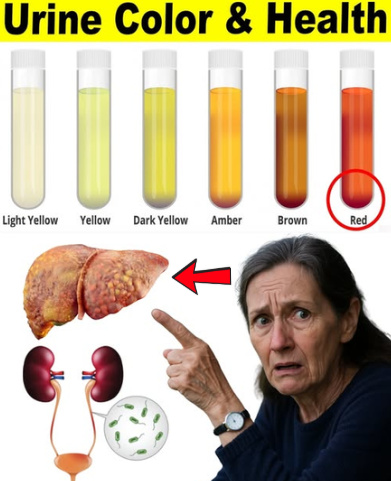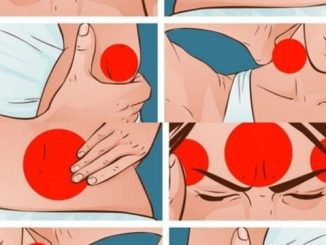
Urine might not be a popular conversation topic, but it’s one of the most reliable signals your body gives you about your overall health. Beyond simply eliminating waste, urine color can reveal whether you’re hydrated, lacking key nutrients, or even facing an underlying medical issue. The best part? You don’t need a lab test—just a quick glance can tell you a lot.
Let’s break down the most common urine colors, what they mean, and when you should pay attention.
Clear or Pale Yellow Urine: Signs of Proper Hydration
The ideal urine color is a light straw or pale yellow. This usually means your kidneys are functioning well and you’re drinking enough fluids to keep your body balanced.
But here’s the catch: if your urine is consistently crystal clear, it could mean you’re overhydrating. Drinking too much water can actually flush out vital electrolytes, leaving you feeling fatigued or lightheaded.
Dark Yellow or Amber Urine: A Dehydration Alert
When your urine turns darker yellow or amber, it’s your body’s way of saying: “I need water.” This happens when your kidneys concentrate urine to conserve fluids.
If you’ve been exercising, sweating heavily, or spending time in the heat, dehydration is the likely culprit. The fix is simple—sip more water throughout the day instead of chugging it all at once.
Orange Urine: Could Be Diet, Medication, or Liver Stress
An orange tint might result from dehydration, but it can also stem from medications such as rifampin, sulfasalazine, or certain urinary pain relievers. High doses of vitamin C or beta-carotene (from foods like carrots) may also be responsible.
However, orange urine combined with pale stools or yellowing skin and eyes is a red flag. This could signal liver or bile duct issues, and medical attention is crucial.
Video : What Your URINE COLOR Says about Your Health
Pink or Red Urine: From Beets to Blood
Seeing red or pink in the toilet bowl is alarming, but it doesn’t always mean something serious. Foods like beets, blueberries, or rhubarb can temporarily tint urine.
That said, red urine may also indicate blood in the urinary tract (hematuria). Causes range from urinary tract infections (UTIs) and kidney stones to prostate issues or more serious conditions like kidney or bladder disease.
If you notice red or pink urine without eating pigment-rich foods, see a doctor immediately.
Blue or Green Urine: Unusual But Possible
Though rare, urine can turn blue or green due to certain medications, artificial food dyes, or even asparagus. Sometimes, it may point to a urinary tract infection caused by specific bacteria or a metabolic condition like familial hypercalcemia.
If the color doesn’t go away after a day or two—or you haven’t consumed anything unusual—it’s worth getting checked by a healthcare provider.
Brown or Cola-Colored Urine: A Serious Warning Sign
Brown or dark cola-colored urine often indicates something more severe than dehydration. It can be linked to:
- Liver problems such as hepatitis or cirrhosis
- Muscle injuries that release proteins into the blood (rhabdomyolysis)
- Breakdown of red blood cells (hemolysis)
If you notice this color, especially alongside fatigue, nausea, or jaundice (yellowing skin and eyes), seek medical care immediately.
Foamy or Cloudy Urine: Infection or Protein Issues
Occasional foaminess might just mean you urinated forcefully. But if it persists, it could signal protein in the urine—a possible sign of kidney disease.
Cloudy urine is often tied to urinary tract infections, especially if it comes with a strong odor or burning sensation. Dehydration and excess phosphate can also cause cloudiness.
If your urine looks foamy or cloudy on a regular basis, it’s time to book a doctor’s appointment.
Video : What Your Urine Color Says About Your Health | Urinary System Breakdown | Health
Final Thoughts: Listen to What Your Body Tells You
Your urine is more than waste—it’s a health report card you get every single day. While changes in color are often harmless and linked to food or supplements, they can also be early warnings of bigger issues. Staying hydrated, eating a balanced diet, and checking with your doctor when changes persist are the best ways to keep your urinary system in top shape.
So next time you head to the bathroom, don’t just flush and forget—take a glance. Your body might be trying to tell you something important.


